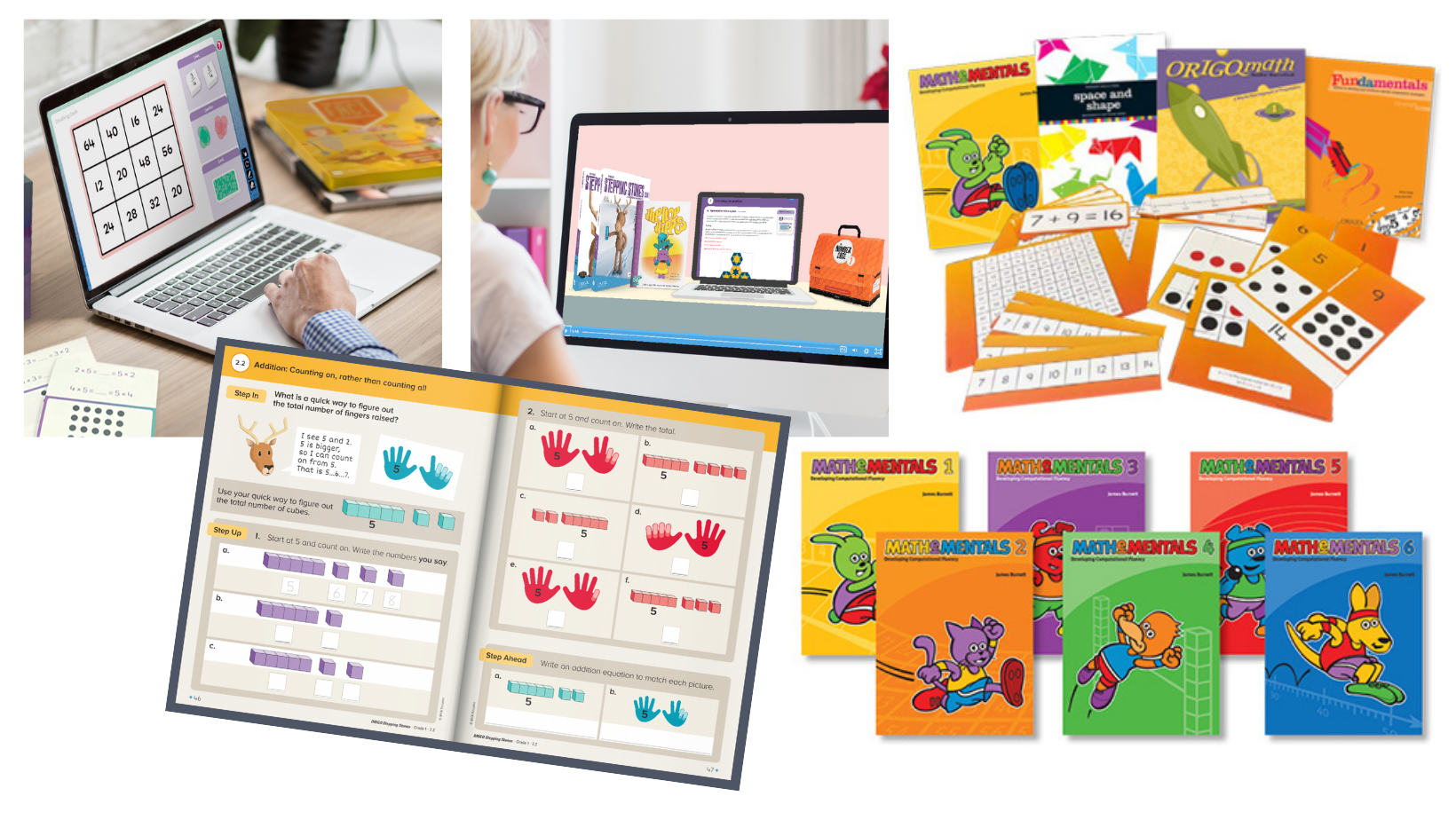Insights
Beyond Calculations: Teaching Math for Conceptual Understanding
When we think about teaching math in elementary school, it’s easy to focus on numbers, equations, and step-by-step procedures. After all, learning to add, subtract, multiply, and divide is important. But is math just about getting the right answer? Or is it something more?
While calculations are a part of math, true mathematical understanding goes far beyond memorizing procedures. Math education isn’t just about memorizing steps—it’s about building deep understanding.
As elementary educators, we have the opportunity to shape how students see math. Let’s move beyond rote procedures and inspire young learners to think mathematically, reason deeply, and discover the importance of math in the world around them.

The Difference Between Math and Calculations
Teaching calculations often focuses on procedures and memorization. Students learn to apply algorithms to get correct answers without necessarily understanding the reasoning behind them. This approach can look like:
- Teaching students to regroup in addition or subtraction without explaining why it works.
- Having students memorize multiplication tables without making connections to real-world contexts and applications.
- Teaching a long division algorithm without discussing the concept of division as equal grouping or repeated subtraction.
While these skills are useful, research suggests that procedural fluency without conceptual understanding can lead to struggles later on. A 2021 study from the University of Notre Dame found that students who develop both procedural fluency and conceptual understanding perform better in math over time than those who focus solely on one approach.
Building Understanding Beyond Numbers
Teaching math means helping students understand the why behind the how. Instead of just memorizing procedures, students explore concepts, make connections, and apply their understanding to different situations. A concept-based approach includes:
- Encouraging number sense so students understand relationships between numbers rather than just performing operations.
- Using visual models, like number lines or base-ten blocks, to deepen understanding.
- Promoting mathematical discussions so students can explain their thinking and listen to different perspectives.
- Encouraging problem-solving and reasoning over rote memorization.
This approach aligns with research from the National Research Council (2001), which states that conceptual understanding improves long-term retention and transferability of knowledge.

The Risks of Focusing Solely on Calculations
1. Lack of Number Sense
Students who rely only on memorized procedures often struggle when faced with problems that require flexibility. For example, if a student is only taught to subtract using an algorithm, they may not recognize that 200 – 199 can be solved mentally as 1.
The article “Learning and Transfer” from the book How People Learn: Brain, Mind, Experience, and School discusses how students who only memorize facts have little basis for approaching complex problem-solving tasks.
2. Difficulty with Problem-Solving
Moreover, when students see math as a set of rules rather than a way of thinking, they may struggle to apply their knowledge in real-world situations. Boaler (2016) highlights that students who engage in sense-making rather than rote learning perform better on problem-solving tasks.
3. Increased Math Anxiety
Lastly, a heavy focus on right and wrong answers can create anxiety around math. When students do not understand why a procedure works, they may feel frustrated and discouraged if they forget a step or make mistakes.
Research indicates that when teachers prioritize correct answers over the process of deriving them, students may develop a fear of failure, which can exacerbate math anxiety. This often occurs in environments where memorized algorithms are emphasized without ensuring conceptual understanding.
To mitigate math anxiety, it is essential for educators to focus on the learning process and conceptual understanding rather than solely on obtaining correct answers.
By shifting instructional emphasis from rote memorization to fostering a deep understanding of mathematical concepts, educators can alleviate math anxiety and promote a more positive learning experience.

Tips for Teaching Math Conceptually in Elementary Classrooms
1. Use Hands-On Materials and Visuals
Manipulatives like base-ten blocks, counters, and fraction tiles help students see math in a concrete way before moving to abstract symbols. Research highlighted in the Journal of Education and Practice indicates that manipulatives can be particularly effective in developing conceptual understanding in mathematics, as they help students relate concrete ideas to abstract concepts and link informal approaches with formal methods.
2. Encourage Mathematical Discussions
Ask students to explain their reasoning and listen to how their peers approach problems. A 2022 study by Henschen, Teschner, and Vogler describes the importance of peer interactions in mathematical learning in kindergarten. Open-ended questions like “How did you solve that?” and “Can you think of another way?” build deeper understanding. For more purposeful math questions, click here.
3. Connect Math to Real Life
Show students how math is used in everyday situations, such as measuring ingredients in a recipe or calculating time until recess. Real-world connections make math more meaningful and engaging.

4. Promote Flexible Thinking
Encourage students to solve problems in different ways. For example, when solving 25 x 4, some students might use repeated addition (25+25+25+25), while others might break it into (25 x 2) + (25 x 2). This flexibility leads to stronger number sense.
A study published in Education Sciences examined the effectiveness of differentiated instructional approaches for teaching math to preschoolers with varying levels of executive functions. The study suggests that differentiated instruction can enhance mathematical skills by accommodating individual cognitive differences, such as flexible thinking.
5. Shift the Focus from Speed to Understanding
Timed tests and drills can reinforce the idea that math is about speed rather than understanding. Instead, emphasize thinking, strategy, and explaining one’s work. Fast enough matters – we don’t want students taking 10 minutes for a simple calculation – and math is not a race.
6. Use Mistakes as Learning Opportunities
Research shows that students who view mistakes as part of the learning process develop a healthy growth mindset that helps them understand math on a deeper level. For instance, the article “Teaching and Learning Mathematics Through Error Analysis” discusses how analyzing mistakes can lead to deeper mathematical comprehension.
Similarly, the paper “An Error Analysis in the Early Grades Mathematics – A Learning Opportunity?” emphasizes that studying learners’ errors provides insights into their thinking processes. This approach enables educators to address misunderstandings effectively, turning mistakes into valuable learning opportunities.

ORIGO Education Supports Conceptual Math Learning
Teaching calculations is just one part of teaching math—but it’s not enough on its own. By focusing on conceptual understanding, problem-solving, and making connections, we can help students develop a deeper appreciation for math.
ORIGO Education provides resources and strategies designed to help elementary educators teach math conceptually. Through engaging visual models, interactive lessons, and research-based instructional methods, ORIGO supports teachers in fostering deep mathematical understanding. ORIGO’s tools focus on building number sense, encouraging problem-solving, and making math accessible and enjoyable for all students.
When students understand the “why” behind the “how,” they build confidence, curiosity, and the ability to apply math beyond the classroom. From hands-on activities to digital resources, ORIGO Education empowers teachers to move beyond rote calculations and create meaningful math experiences in the classroom.



